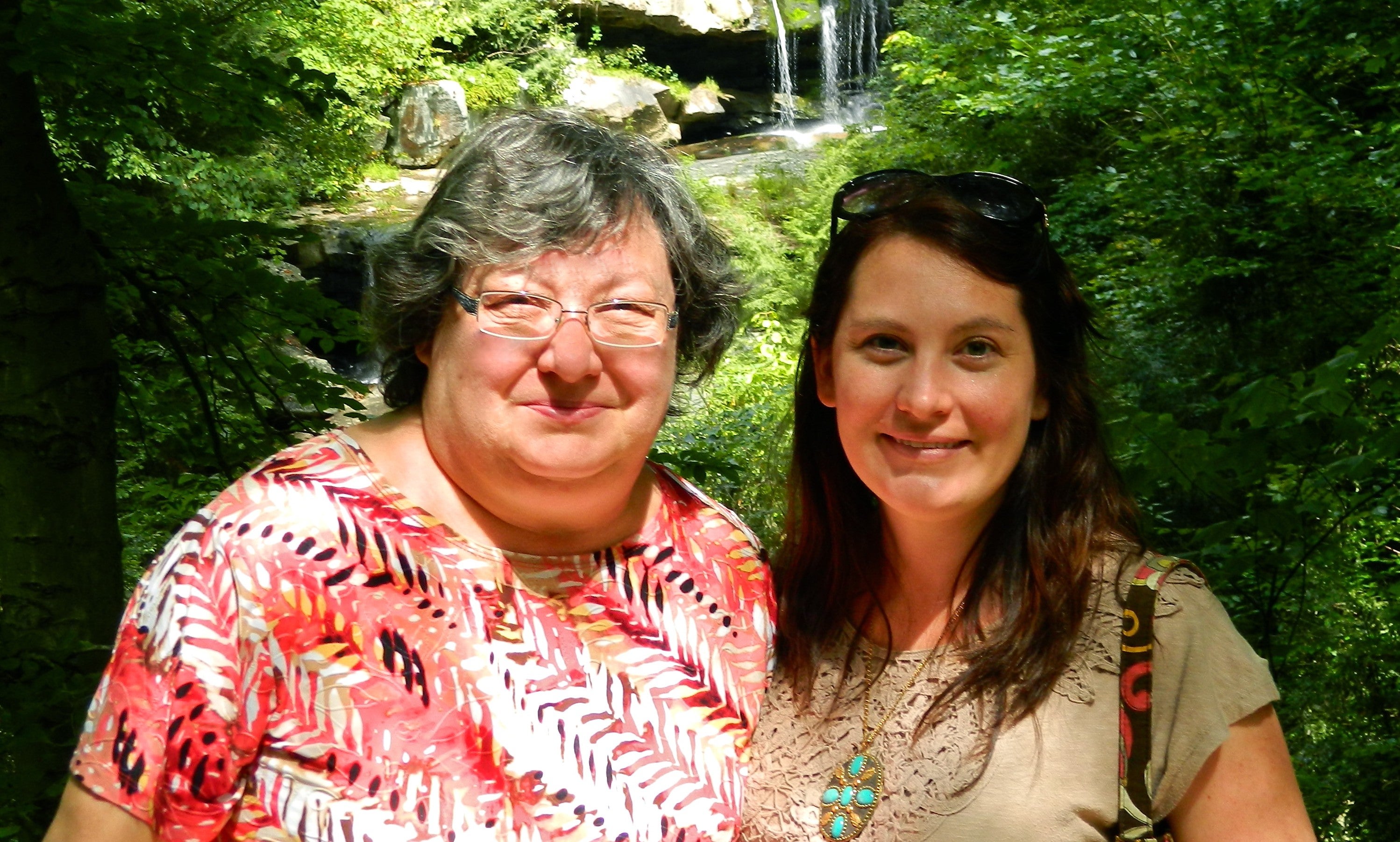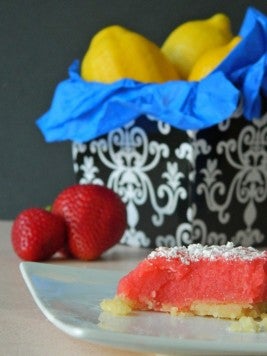RIVERSIDE, Calif. — Cindy Larive, chair of the Department of Chemistry at the University of California, Riverside, is well known for her work in bioanalytical chemistry, including research on the stress response of plants to flooding and drought and methods for detecting whether fruit juices have been “watered down” with cheaper ingredients. But recently, it’s her work on the buttermilk pancake that has been taking the Web by storm.
Specifically, “Buttermilk Pancakes with Mixed Berry Compote and Sweet Vanilla Butter.”
Larive and her daughter, Erin Kaplan, a visiting lecturer in economics at the University of Pittsburgh, are co-creators of The Food Doctors, a blog devoted not merely to creating amazing food, but also to the science and economics that make that amazing food possible.
The blog was conceived last spring as Kaplan and Larive were hiking in Cinque Terre National Park in Italy. Kaplan had recently won a dessert-making competition and had one of her recipes featured on the How Sweet It Is blog. As they explored the park, Erin suggested starting a blog of their own. Naturally, they came up with the blog’s framework during dinner.
“We wanted to create something more academic than the average food blog – a place where we could geek out over food and maybe teach people a little bit along the way,” Kaplan said. “Teaching economics comes very naturally to me, and I know my mother feels the same passion about chemistry. It was kind of a perfect storm.”
Creating great food has always been a major part of life for Larive and her daughters, dating back to when she was completing her Ph.D. here at UCR and Kaplan and sister Megan were students at the UCR pre-school. Erin recalls that she religiously watched Julia Child: Bon Appétit, convinced that the master chef was a long-lost grandmother.
“All three of us cooked together. It is among my best memories,” Larive said. “The blog has been a good way for Erin and I to stay connected. Plus, I have learned some economics.”
“We try to write posts for a general audience, but when it comes down to it, it’s still chemistry and economics, which aren’t most people’s favorite subjects,” said Kaplan, who continued to cook as she earned a bachelor’s degree in mathematics and economics from Kansas in 2005 and her Ph.D. in economics from UC Santa Barbara in 2011. “I think that it really goes to show just how strongly we all connect to food. By far the most rewarding thing is when people ask us questions or engage us to learn more. That’s when I feel that we’ve been really successful.”
There’s a lot of science that goes into cooking something as simple and wonderful as the perfect pancake.PHOTO BY CINDY LARIVE
The pancake post is a perfect example what Larive and Kaplan are shooting for. It begins with a discussion of the differences between pancakes and crepes, segues gently into a discussion of the importance of carbon dioxide in the process of making the perfect pancake. (For the uninitiated, it’s the baking powder that contains sodium bicarbonate that combines with acid to create a chemical reaction that releases the gas that allows the pancake to rise and become light and fluffy.) Then comes the recipe itself, complete with beautiful photos that almost make up for the internet’s inability to transmit smell and taste.
“I think that many people are eager to understand the scientific aspects of cooking,” Larive said, adding that many cooking shows will discuss complicated concepts such as molecular gastronomy, but not the details of basic cooking. “We want to feature the science behind everyday cooking.”
Larive and Kaplan said that creating a blog posting takes from one to three hours, depending on the topic and the amount of rumination and research that goes into it. Some recipes are family favorites that have been made hundreds of times, while others are new creations that are tested and retested until they get a satisfactory result.
“Some things I share because I love them and make them all the time and some things I develop from scratch,” Kaplan said. “I can sometimes be a perfectionist.”
Larive’s recent appointment to chair of the chemistry department has cut into the time she has to blog. “I have always been busy, but now I am even more busy. I am trying to get a few more blogs written before fall quarter starts,” she said.
Over the next few weeks the blog will feature recipes on salmon patties that use wild-caught canned salmon, posts on agricultural subsidies and a Kaplan-penned “ode to the industrial food complex, which gets a pretty bad rap from most ‘food activists.’” In the fall the blog will move into a theme that features soups and other hearty dishes.
While the blog has gotten rave reviews, with some posts even spawning discussions about academic papers, Larive and Kaplan said they have modest expectations.
“We do not have big ambitions for the blog,” Larive said. “We intend to continue as long as we find it fun.”
Making Food Into Art
Capturing the essence of food in a photo has been a welcome challenge for Erin Kaplan of The Food Doctors blog.PHOTO BY ERIN KAPLAN
It is said that a picture is worth 1,000 words. But in the case of food blogs and cookbooks, great imagery is even more important as it has to make up for the viewer’s inability to touch, smell and taste the food. And while the art on The Food Doctor’s blog is outstanding, Erin Kaplan said that it has been one of her biggest challenges.
“The photography is, by far, the hardest part for me,” she said. “I tend to be a bit of a perfectionist, so I found it really frustrating at first.”
But just like any good researcher, Kaplan hit the books and consulted experts.
“I read a lot about food photography online, particularly on the Gourmande in the Kitchen blog, and I contacted my brother-in-law, who is a very talented amateur photographer.”
While there has been a learning curve, Kaplan’s work has impressed her mother and co-editor, Cindy Larive.
“The pictures are key, they really draw the reader in,” Larive said. “She takes most of the photos and hers are definitely more artistic than mine.”
Kaplan’s Three Keys For Great Food Photography
- Figuring out where in my house has good lighting — I take all of the pictures in my sunroom.
- Using a tripod. It is nearly impossible for me to get a decent shot without fussing with the setup while looking at the image that I’m creating. This can also be time consuming, so I try to find times when I’m not in a rush.
- Practice. Practice. Practice.


